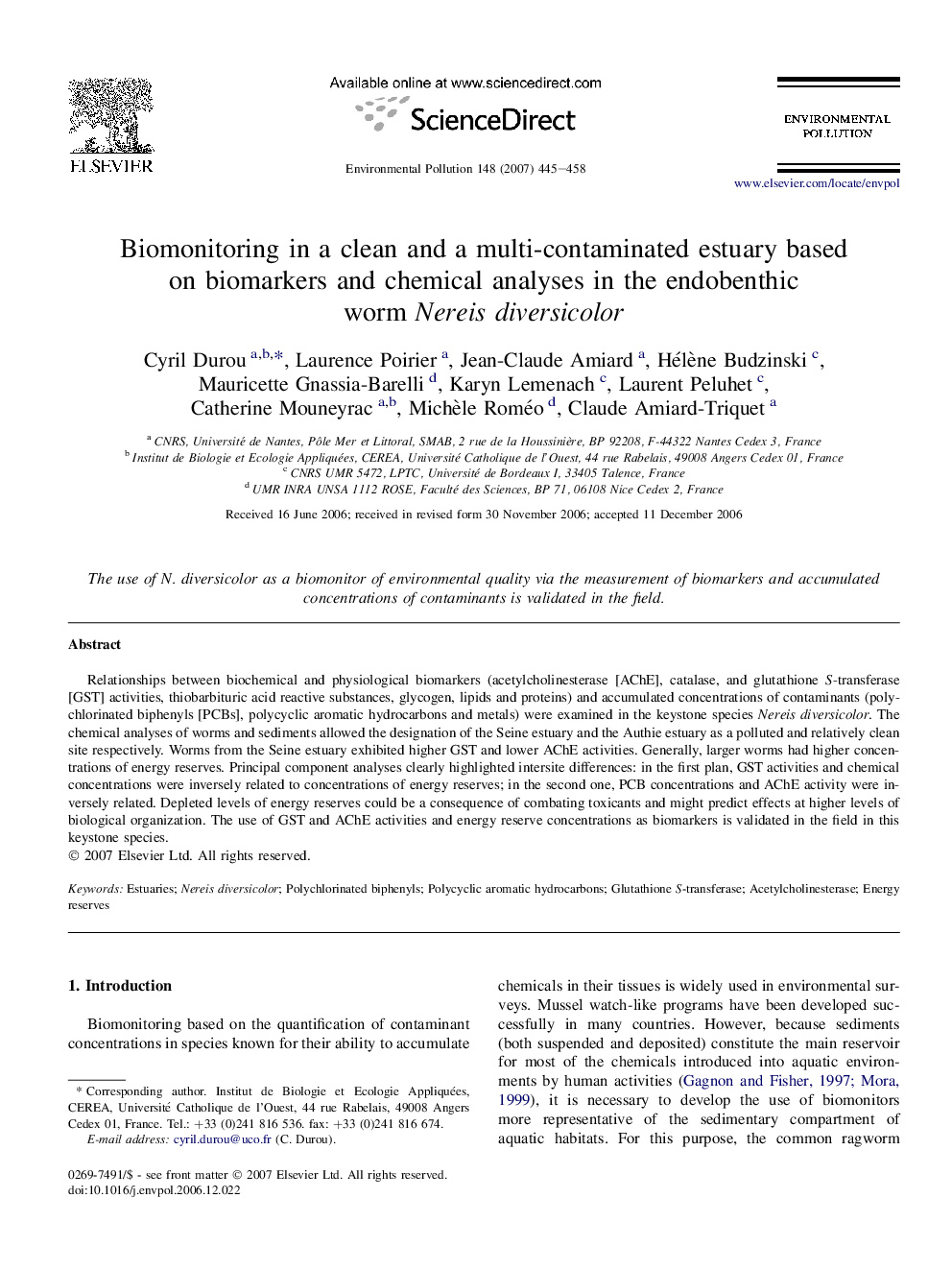| Article ID | Journal | Published Year | Pages | File Type |
|---|---|---|---|---|
| 4427609 | Environmental Pollution | 2007 | 14 Pages |
Relationships between biochemical and physiological biomarkers (acetylcholinesterase [AChE], catalase, and glutathione S-transferase [GST] activities, thiobarbituric acid reactive substances, glycogen, lipids and proteins) and accumulated concentrations of contaminants (polychlorinated biphenyls [PCBs], polycyclic aromatic hydrocarbons and metals) were examined in the keystone species Nereis diversicolor. The chemical analyses of worms and sediments allowed the designation of the Seine estuary and the Authie estuary as a polluted and relatively clean site respectively. Worms from the Seine estuary exhibited higher GST and lower AChE activities. Generally, larger worms had higher concentrations of energy reserves. Principal component analyses clearly highlighted intersite differences: in the first plan, GST activities and chemical concentrations were inversely related to concentrations of energy reserves; in the second one, PCB concentrations and AChE activity were inversely related. Depleted levels of energy reserves could be a consequence of combating toxicants and might predict effects at higher levels of biological organization. The use of GST and AChE activities and energy reserve concentrations as biomarkers is validated in the field in this keystone species.
